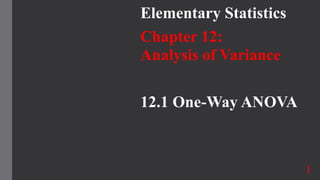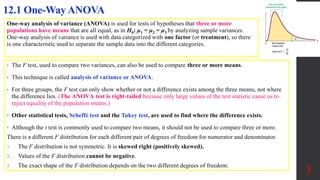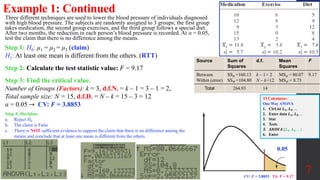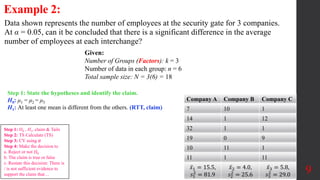Chapter 12 discusses Analysis of Variance (ANOVA), specifically focusing on one-way and two-way ANOVA techniques to determine significant differences among three or more means. It explains the use of the F test for hypothesis testing, assumptions for the ANOVA, and how to calculate between-group and within-group variances. The chapter also includes examples illustrating how to apply the ANOVA method and interpret results, with supporting resources for further learning.










